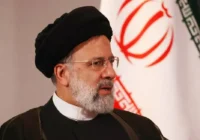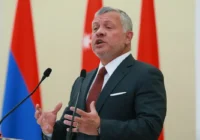The “diplomatic coup” triggered by Iran and the US has given rise to a new era in Tehran’s relations with the international community.
The whole episode began in 2013 when a moderate, pragmatic cleric, popularly known as the “Diplomat Sheikh,” replaced Mahmoud Ahmadinejad as the president of Iran. Hassan Rouhani, who spearheaded Iran’s nuclear negotiations with the big three in Europe under President Mohammad Khatami, won the hearts and souls of Iranians thanks to his promise of “constructive engagement” with the international community. President Rouhani was intent on ending more than a decade of political and economic isolation, originating from the international community’s goal of preventing Iran from acquiring nuclear weapons—a charge that Iranian officials had denied over and over again.
The determination to settle the nuclear dispute was nonexistent under Ahmadinejad, and his foreign policy was founded on adventurism and a willingness to pick a fight against the “arrogant powers,” whom he accused of pursuing double-standards on nuclear weapons. The former president had vocally lamented the United States for possessing thousands of nuclear warheads, while Iran was being lethally pressured to abandon its nuclear program—which was said to be peaceful.
Ahmadinejad was right in that the policies of the US and other nuclear states were not sincere and consistent, but what he should have done was build confidence over Iran’s right to develop nuclear technology for peaceful purposes. He also lacked the prudence and firmness to engage in direct talks with the international community.
Why Ahmadinejad failed
Ahmadinejad wanted to promote himself as a champion of resistance against “imperialism,” and his eagerness to travel to underprivileged and developing countries and deliver public speeches is a case in point. He implicitly associated himself with the 12th Shia imam, which according to Shia teaching is the end of time savior who will bring justice to the world. Ahmadinejad’s apocalyptic mindset, coupled with his overconfident foreign policy attitude, degenerated into a nuclear crisis that outlasted his tenure and emerged as a challenge for the international community.
The former president believed that the nuclear case was a battleground in which his bold refusal to compromise would idealize him in the eyes of a segment of Iranian society and the Muslim world that loathed any sort of opening with the US. But what happened was that Iranians had to embrace the suffering caused by sanctions, while no real collapse befell the “imperial powers.”
Ahmadinejad was too inexperienced and immature to be president, especially at a time when the nuclear issue was relapsing into chaos and demanded diplomatic finesse to be handled peacefully.
What did Rouhani accomplish?
Under Ahmadinejad, Iran bore the brunt of international sanctions over its nuclear activities—e perhaps one of the most extensive and stringent measures against a sovereign nation. By the time Hassan Rouhani entered the fray, he pledged to work strenuously to have nuclear sanctions lifted.
Bypassing the turbulent years of Ahmadinejad’s rule, Rouhani was elected in the June 2013 presidential election after winning a landslide victory, and some 30 months later, he delivered his promise: January 16, 2016, has come to be known as Implementation Day, a date that should be recorded for the history of modern diplomacy. This is a day when the July 2015 nuclear deal—known as the Joint Comprehensive Plan of Action (JCPOA)—signed by Iran and the P5+1 would officially be executed. After confirmation by the International Atomic Energy Agency (IAEA) that Iran had complied with all of its technical commitments and rolled back the sensitive parts of its nuclear program, the US and the European Union did their part and terminated the tormenting economic sanctions against Iran.
However, Implementation Day is outstanding and inimitable not only because it marked the end of embargoes that threatened the livelihoods of everyday Iranians, but because it proved once again that diplomacy is the best instrument for solving the most taxing challenges and conflicts. At the same time, it demonstrated that utilizing the logic of negotiation and refraining from the use of force, coercion and humiliation are the safest and most sensible ways to ensure that no new war is waged and no more blood is spilled.
Ups and downs of Iran-US relations
To fully understand the significance of what has been achieved, one needs to look at the troubled history of the main negotiating parties. Iran and the US had the highest stakes in the talks. However, for about four decades, there had been no official direct contact between Tehran and Washington. They severed diplomatic ties following the 1979 Iranian Revolution.
Since then, any sort of contact between the officials of both countries became a taboo. In fact, Iranian politicians would often denounce any report about a mid-level foreign ministry official greeting a US diplomat after accidentally bumping into him or her during an international forum. Several unexpected encounters happened throughout these years, but Iran would promptly deny them, playing down the possibility that the ice of diplomatic relations between Tehran and Washington had begun to melt.
Even during the irregular negotiations between Iran and the P5+1 under President Ahmadinejad, Tehran often denied that Iranian and American negotiators held one-on-one talks, instead emphasizing that all exchanges took place during the multilateral negotiations. Such an approach gave the impression that talking to a US government official would be seen as an unforgivable sin that had to be cautiously avoided. But in the world of diplomacy, such parochial conservatism is simply futile.
However, President Rouhani pursued the naissance of an opening with the US quite persuasively. He dispelled the myth that talking to Washington would be detrimental to Iran’s national security interests, and he won the backing of Ayatollah Ali Khamenei to bring the nuclear stalemate to a closure.
Rouhani assigned Foreign Minister Javad Zarif to be the lead negotiator and gave him sufficient authority to direct the talks based on two principles: Iran’s peaceful nuclear program should be recognized as a sovereign right, and that all nuclear sanctions had to be removed. The US-educated diplomat carried out the mission quite discreetly, and his frequent trips to Geneva, Lausanne, Vienna, New York, Muscat and European capitals, together with the faithfulness and commitment that US Secretary of State John Kerry demonstrated, bore fruit in January 2016.
John and Javad Became “Friends”
During these tense months of heated negotiations between Iran and the P5+1, Zarif and Kerry developed a close relationship—exchanging emails, having several phone conversations and referring to each other by first names—and became icons of diplomacy.
Zarif and Kerry’s close ties paid off in other instances of diplomatic engagement and highlighted the efficiency of constructive dialog.
On January 12, 2016, Iran detained ten American sailors from two small US Navy vessels that had mistakenly entered its territorial waters in the Persian Gulf due to technical problems. However, in about 16 hours, they were released and returned to US custody, and the US Naval Forces Central Command confirmed that they were not harmed or harassed during their brief detention.
Kerry called Zarif at least five times over the diplomatic incident, and the Iranian foreign minister ensured that the crew would be treated respectfully and freed immediately. The outcome was probably disheartening to those who wanted the unprompted standoff to start a new feud between Iran and the US, leading to the collapse of the nuclear deal a few days ahead of its expected implementation.
Added to that, a few hours before the nuclear deal was implemented on January 16, five US citizens who had been serving their prison terms in Iran on different charges, including the noted Washington Post journalist Jason Rezaian, were released in a surprise prisoner swap that secured the freedom of seven Iranian citizens after US President Barack Obama pardoned them. The Iranian prisoners were convicted of violating US sanctions against Iran. It was later revealed that even though the prisoner exchange was something disconnected from the nuclear deal, secret negotiations between Iranian and American diplomats—including Zarif and Kerry—had been ongoing for 14 months.
Both affairs showed that diplomacy, not the barrel of a gun, is capable of solving the most insurmountable difficulties and intricate dilemmas.
Outcome of the “diplomatic coup”
The “diplomatic coup” triggered by Iran and the US has given rise to a new era in Tehran’s relations with the international community. Iranians are sighing in relief, experiencing the post-sanctions life when they do not have to buy their consumer goods on tripled or quadrupled prices. Hospitals in Iran will now have access to vital medication, and people will not have to grapple with a 40% inflation rate and uncapped unemployment.
Iranians will see their livelihoods boosted as the influx of foreign direct investment will help revamp the nation’s crippled economy and certainly improve the value of national currency. Iran’s aerial fleet will be equipped with modern aircraft, and flying with Iranian airliners will not be a life or death challenge every time.
All the benefits that exhausted Iranians will reap from the nuclear deal have emerged out of unfaltering, persistent and dynamic diplomacy. But it is not only the Iranian nation that will gain from the JCPOA. The entire international community will see the motivating outcomes of more than two years of negotiations to preclude a new war in the Middle East and renew mutual trust and respect with a nation that is ready for honest and productive relations with the outside world.
The views expressed in this article are the author’s own and do not necessarily reflect Fair Observer’s editorial policy.
Photo Credit: Security Conference / US Department of State / Agencia Brasil
 We bring you perspectives from around the world. Help us to inform and educate. Your donation is tax-deductible. Join over 400 people to become a donor or you could choose to be a sponsor.
We bring you perspectives from around the world. Help us to inform and educate. Your donation is tax-deductible. Join over 400 people to become a donor or you could choose to be a sponsor.
Support Fair Observer
We rely on your support for our independence, diversity and quality.
For more than 10 years, Fair Observer has been free, fair and independent. No billionaire owns us, no advertisers control us. We are a reader-supported nonprofit. Unlike many other publications, we keep our content free for readers regardless of where they live or whether they can afford to pay. We have no paywalls and no ads.
In the post-truth era of fake news, echo chambers and filter bubbles, we publish a plurality of perspectives from around the world. Anyone can publish with us, but everyone goes through a rigorous editorial process. So, you get fact-checked, well-reasoned content instead of noise.
We publish 2,500+ voices from 90+ countries. We also conduct education and training programs
on subjects ranging from digital media and journalism to writing and critical thinking. This
doesn’t come cheap. Servers, editors, trainers and web developers cost
money.
Please consider supporting us on a regular basis as a recurring donor or a
sustaining member.
Will you support FO’s journalism?
We rely on your support for our independence, diversity and quality.








